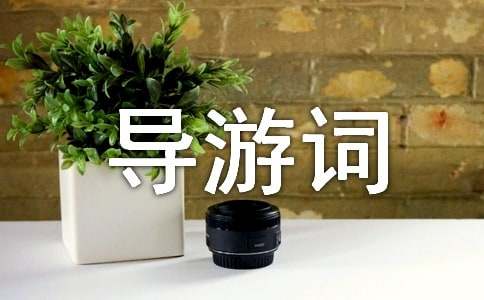- 天坛的英文导游词 推荐度:
- 相关推荐
天坛英文导游词
作为一名默默奉献的导游,常常要根据讲解需要编写导游词,导游词不是以一代百、千篇一律的,它必须是从实际出发,因人、因时而异,有针对性的。那么问题来了,导游词应该怎么写?下面是小编为大家整理的天坛英文导游词,欢迎阅读与收藏。

天坛英文导游词1
(Inside the South Gate of the Temple of Heaven)
Ladies and Gentlemen:
Welcome to the temple of Heaven. (After self-introduction) preserved cultural heritages of China. There are basically two kinds of visitors who come here: local pensioners who do exercises here in the morning and evening and sightseers both from home and abroad. All in all, there are 12 million visitors very year. Now we are going to go along the route that leads to the alter. It will take roughly one hour. Mind you, the emperor also walked along this route to pay tribute to the God of Heaven.
(Along the Southern Sacred Road leading to the Circular Mound Altar)
The largest group of architectures ever to be dedicated to Heaven, the Temple of Heaven served as an exclusive altar for Chinese monarchs during the Ming and Qing dynasties. It was decreed that rulers of successive dynasties would place altars in their own capitals to worship Heaven and pray for good harvest. But why?
The ancient Chinese believed that Heaven was the supreme ruler of the universe and the fate of mankind, and thus worshiping rites dedicated to Heaven came into being. The Heaven the ancient Chinese referred to was actually the Universe, or nature. In those days, there were specific rites of worship. This was especially true during the Ming and Qing dynasties when elaborate ceremonies were held.
The Temple of Heaven was built in 1420 during the reign of Emperor Yongle of the Ming Dynasty. Situated in the southern part of the city, this grand set of structures covers an area of 273 hectares. To better symbolize heaven and earth, the northern part of the Temple is circular while the southern part is square. The whole compound is enclosed by two walls, a square wall outside a round one. The outer area is characterized by suburban scenery, while the inner part is used for sacrifices. The inner enclosure consists of the Hall of Prayer for Good Harvest and the Circular Mound Altar.
(Along the Imperial Passage leading from the Southern Lattice Star Gate in front of the Circular Mound Altar)
The Circular Mound Altar is enclosed by two walls, each containing four groups of Southern Lattice Star Gate, each in turn consisting of three doors, with 24 marble doors altogether. Standing on the passage facing north, you will notice that with each pair of doors on is narrower than the other. This reflects the feudal hierarchy: the wider door was reserved for monarchs, while the narrower one was used by courtiers.
On the day of the ceremony, the emperor would don his ritual costume and be ushered in by the official in charge of religious affairs. He ascended the three terraces in the forefront to pay tribute at the alter.
(Atop the Circular Mound Alter)
we are now on the top terrace of the Altar, or the third terrace. Each terrace has a flight of 9 steps. At the center of this terrace lies a round stone surrounded by 9 steps. At the center of this terrace lies a round stone surrounded by 9 concentric rings of stone. The number of stones in the first ring is 9, in the second, 18, up to 81 in the 9th ring. Even the number of carved balustrades on these terraces is a multiple of 9. But why?
天坛英文导游词2
各位游客,我们今天所要参观的就是以前皇帝祭天的地方——天坛。
明朝永乐皇帝迁都北京以后,在北京南城仿照南京的大祀殿建立了这作用于祭天的圣坛,占地面积达到了273万平方米。主建筑是大祀殿,也就是今天祈年殿的位置上。天坛有外坛墙和内坛墙,北面是圆形,南面是方形,取意天圆地方。在一开始,祭天和祭地都是天坛,直到明嘉靖年间在北城修建了地坛,才分开的,并且新增了圜丘坛,用于孟冬祭天,把原来的大祀殿改为大享殿,专门用于孟春祈谷,当时殿宇屋顶已经是三重檐了,从上至下的蓝黄绿三色瓦分别代表了天地万物。而在乾隆年间,有将大享殿改为现在的祈年殿,而将屋顶瓦片都改成了蓝色的琉璃瓦。从而形成了今天我们所看到的这个世界上最大的祭天建筑群。
可是这样一个祭天圣地,却也曾经在1860年时遭到英法联军的洗劫,继而在1900年的时候又遭到了八国联军的蹂躏。在1916年袁世凯登基的时候也曾经在天坛上演了一出祭天的闹剧。在1918年,天坛最终还是以公园开放。解放以后天坛不仅成了著名的旅游景点,而且还是北京城市绿地的组成部分,来这里的不光是旅游者,还不乏一些专门为了强身健体的老人们。
现在就让我们沿着当年皇帝登坛的路线开始此次游览。
说完了神坛的奇妙,我在给您介绍一下祭天大典的盛况。到了每年的.冬至,皇帝就要在这里祭天。在大典前两天,皇帝要在故宫里进行斋戒,而到了第三天,也就是冬至前一天,就要到天坛的斋宫进行斋戒。冬至那天,在日出前七刻,现在的凌晨四点多,奏报时辰,皇帝起驾,斋宫东北角的钟楼开始鸣钟。到具服台盥洗更衣,神牌都送到台面相应的位置,也就是七组神位,称作七幄;在圜丘前燔柴炉上放一只牛犊,用松枝燔烧,西南的望灯杆望灯高悬,点燃蟠龙通宵宝蜡,台南广场上排列着奏乐队,配合着中和韶乐,在文武百官的陪同下,祭天大典就正式开始了,皇帝由南棂星左门登坛,这时钟声停止,到了第二层南侧拜位站好后,听候司赞人报仪程。恭读至皇天上帝的祝文。礼仪结束以后,要将神位前的贡品分别送到燔柴炉(从正位幄次撤下的祭品再次焚烧,皇帝也要一旁恭立目视,称为望燎)和燎炉(圜丘坛共有12座燎炉,在瘗坎北侧,从东向西排列着8个;内围护墙东西棂星门外各有一对。从配位幄次车下的祭品分别送到8个燎炉内焚烧,而四个从位幄次的祭品送到棂星门处)焚烧,烟雾腾空,象征着送到天庭。而后还要将牛尾、牛毛、牛血送到瘗坎掩埋,象征不忘祖先茹毛饮血之意。在这个典礼上,需要特别提到的是皇帝恭读祝文所站立的地方,就是刚才所说的台面中心天心石。他是天坛三大声学现象之一。在这里朗读的时候声音特别洪亮,而且现在这里也是一样的,各位游客不妨体会一下这奇特的效果,也像当年的皇帝一样,向上天诉说自己美好的愿望。
现在咱们继续沿着中轴线行走,面前的建筑叫做天库,而它的正殿就是皇穹宇。皇穹宇建于明嘉靖九年,起初叫做泰神殿,到了十七年,改名为现在的皇穹宇,它的作用就是在平日存放圜丘坛祭祀主神的地方,所以这里也叫圜丘坛寝宫。殿内正面的圆形石台上安放的就是皇天上帝的神牌,而前边两侧的四个方形石台上安放的则是八位祖先神主,还有东西配殿用来存放从祀神位。而皇穹宇三个字也分别代表了至高无上,天,宇宙的意思,更加显示出它的神圣和至尊。
它是一座建筑艺术价值非常高的殿宇,总体呈圆形,下边是高2.85米的圆形须弥座,为青白石筑成,有东南西三个方向的出陛,也就是台阶,而在南向出陛还有二龙戏珠的丹陛石。上边是蓝色筒瓦单檐攒尖鎏金宝顶。而在殿内还有八根檐柱和八根金柱,大殿上架没有横梁承托,全都是靠各类斗拱层层上叠来支撑,步步收缩,从而形成了精美的穹隆圆顶。这里边还运用了物理学中的杠杆原理。这组建筑不仅十分精美,而且还有回音壁和三音石,这和刚才我们说的天心石合称天坛三大声学现象。回音壁就是皇穹宇的外墙,围墙建造的磨砖对缝,十分的平滑,是很好的声音载体,可以传声,在传递途中对声音损失极小,只要对着墙说话,就算相隔四五十米,见不到面,都可以清晰的听到对方说话。而三音石则是皇穹宇大殿正前方的三块石头,您站在第一块石头上拍手可以听到一次回音,第二块石头可以听到两次,而第三块就可以听到三次回音,所以称为三音石。在后来也有人把它叫做三才石,取天地人三才的意思。
也许您刚才就已经注意到了,天坛有非常多的柏树,不错,它就好像北京一个天然的氧吧。而在这许多古柏当中,有一株500余岁的桧柏,就是回音壁西墙外的这棵九龙柏。它的树干纹理非常的奇特,布满了沟壑,而且旋转扭曲,好像9条蟠龙缠绕嬉戏,所以叫它九龙柏真是一点也不过分。
谢谢大家,如有不妥之处,还望见谅。
【天坛英文导游词】相关文章:
天坛的英文导游词01-13
天坛的导游词05-05
天坛导游词06-18
天坛的导游词03-27
天坛导游词07-14
北京天坛导游词06-05
北京天坛的导游词08-26
天坛的导游词范文05-16
天坛公园的导游词12-18